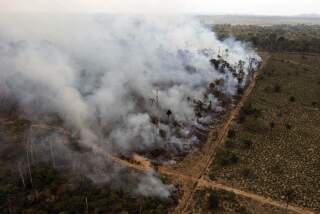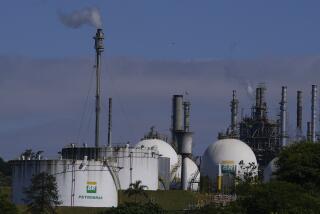Kerosene wick lamps produce both light and hazardous soot
The bright orange flames of kerosene wick lamps used in millions of impoverished households around the world are significant sources of global warming and pollutants linked to respiratory diseases, according to a new study.
Lab and field work led by researchers at UC Berkeley and the University of Illinois at Urbana-Champaign showed that 7% to 9% of the kerosene consumed by the crude burners is converted to black carbon -- a 20-fold increase over previous estimates, the study published online this month in the journal Environmental Science & Technology said.
One kilogram of black carbon, a byproduct of incomplete combustion that absorbs light and heats the atmosphere, produces as much warming in a month as 700 kilograms of carbon dioxide does in a century, the study said.
“Kerosene wick lamps are among the most polluting devices on earth,” Tami Bond, associate professor of civil and environmental engineering at the University of Illinois, said in an interview. “The very thing that makes their flame so bright – the black carbon generated by burning kerosene – is also a pollutant.”
“You have to sit close to one of these lamps in order to get their light,” Bond added. “So people inhale more hazardous particulate matter from them.”
Women who used kerosene lamps in the home had 9.4 times the rate of tuberculosis found in households that did not use such lamps, according to a recent epidemiological study in Nepal led by researchers at UC Berkeley’s School of Public Health.
The lamps are simple: a wick extending from a fist-sized glass or metal container. Light the lamp and kerosene burns off the top of the wick, creating a bright light, smoke and soot.
Kerosene, a combustible hydrocarbon liquid derived from petroleum, is the most common lamp fuel in India and many other nations in Africa, Southeast Asia and Latin America. Worldwide, an estimated 300 million households without electricity consume 77 billion liters of mostly kerosene fuels each year.
The researchers point out that there are ongoing programs in developing countries to help people replace kerosene wick lamps with affordable alternative sources of light such as diode lamps charged by photovoltaic cells or electricity during non-peak hours.
“These programs will result in big reductions in global warming and improvements in human health,” Bond said.
Louis.Sahagun@latimes.com







